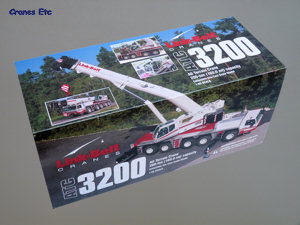 | | Picture sleeve. |  | 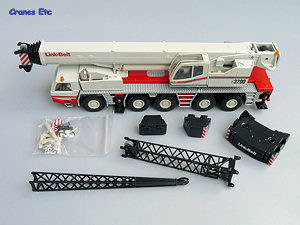 | | The parts out of the box. | 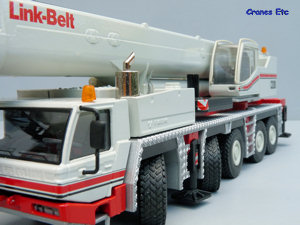 | | Steering has a good lock. | 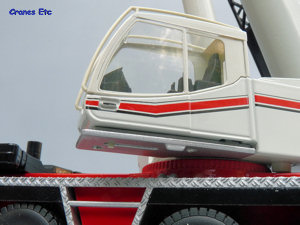 | | The switch under the cab for tilting the seat and controls. | 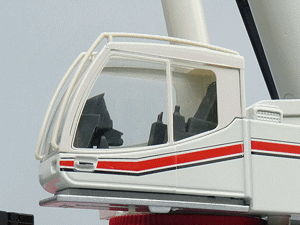 | | The tilting seat. | 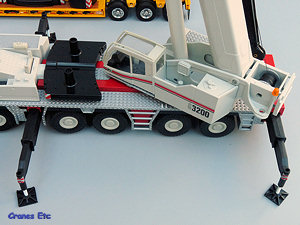 | | Outrigger beams are plastic. | 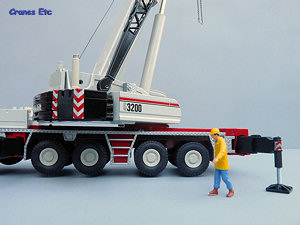 | | The maximum counterweight is loaded. | 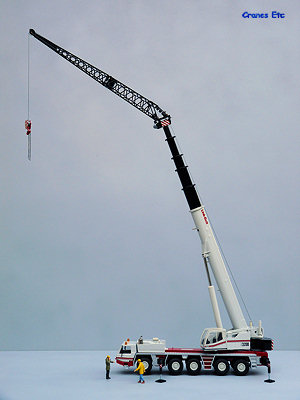 | | Fly jib can be set at an offset angle. |
| Link-Belt sell this crane which is a rebadged Tadano Faun 160G-5. It has a capacity of 200 tons (160 tonnes).
Packaging
The model comes in a two piece expanded polystyrene box held together by a picture sleeve which has basic data about the crane together with a very good photo of the real machine. Inside the box, the model is held securely and the review model was undamaged.
There are no instructions provided with the model and although it is straightforward to assemble, a simple instruction leaflet would be useful particularly to attach the three different brackets for carrying the fly jib on the side of the boom.
Detail
Underneath, the model has no detail for the most part except under the driving cab where there is a ladder modelled within the casting. The tyres and wheel hubs are the standard Conrad type and the use of the same hub detail on every axle simplifies the arrangement of the real crane. The white plastic hubs look a little less good than if they were painted metal. At the front the driving cab looks good with steps, door mirrors (different on each side), orange beacon lights and very good small headlight lenses. There is a loop for attaching the hook during transport. Inside the driving cab the detail is fairly simple.
The carrier deck has a nice textured surface and the detail is fine behind the cab with a metal exhaust stack and various boxes. Moving along the deck, the two stage outrigger beams are basic and plastic, as are the pads. At the rear of the carrier deck there is a towing hitch.
The crane cab has a plastic top with grab rails and simple internal detail with joysticks and a computer screen visible. The crane body has a slewing motor and a fuel tank filler cap within the casting. At the rear there is an orange beacon light above the winch. The counterweight is good as it consists of a number of slab plates which have lifting lugs, and also two cheek blocks which unfortunately cannot be posed being lifted by the model crane as the lugs are not properly formed.
Detail on the boom is fairly simple with a few details contained in the casting and, for example, there is no cable drum on the side of the boom. The main lift cylinder has a plastic jacket. At the boom head the usual Conrad plastic pulleys are provided. The fly jib is a very good piece of casting and the two parts fit together and to the main boom very well indeed.
The hook is a three sheave block with a double hook which is fine for the main boom but does not look quite right for the fly jib where a single line hook would have been ideal.
Features
Each of the front and rear pairs of axles are linked and steer as a pair and this feature works well as a good hard lock can be obtained. As on the real crane axle 3 does not steer, but it is not a lift axle as on the original and this would have been an interesting additional feature.
The two stage outriggers extend well and the pads can be screwed down to hold the crane’s weight. The crane cab does not tilt on this model but that is because on the real crane the tilting mechanism is inside the cab and affects the seat and controls only. However this function has been implemented on the model. Under the cab is a small switch and moving this causes the seat and controls in the cab to tilt a little.
Various counterweight configurations are possible by using different arrangements of the slabs. The lowest of the slabs is recessed to accommodate the boom lift cylinder of the crane and this allows this slab to be carried on the carrier deck during transport. The scaling of all the parts allows this to be achieved perfectly on the model.
The boom is a six stage telescope and all parts work very smoothly. The fly jib offers two configurations; a short heavy lift section and a longer more conventional fly jib. All parts are pinned together using either plastic or metal pins. The fly jib also includes a raking mechanism so it can be straight or set at one of two angles and this is a good feature.
Quality
The model is made well and all parts fit together fine. Although the level of detail breaks no boundaries, the model looks good nonetheless.
The paintwork and graphics are of a very good standard and the Link-Belt livery looks smart.
Price
The model is good value from the Link-Belt webshop.
Overall
This is a solid model and looks very good in Link-Belt colours. There are areas where the model could be improved but it has enough detail and features to keep collectors happy and is recommended as a result.
Footnotes
The model first appeared at BAUMA in April 2007 in Tadano Faun colours and in January 2008 this version appeared in Link Belt colours.
|
| |
| 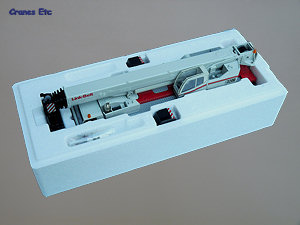 | | The parts inside the box. | 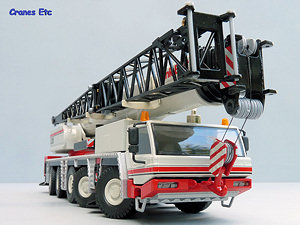 | | Fly jib stowed for transport. | 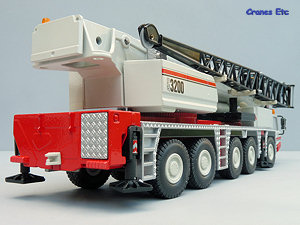 | | Detail is a little sparse at the back. | 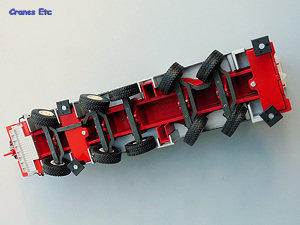 | | There is little detail underneath | 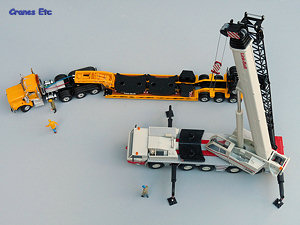 | | The ballast has arrived on a Rogers trailer. | 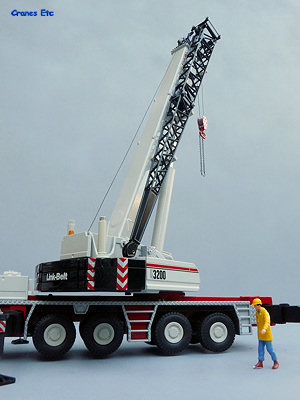 | | Ready to go to work. | 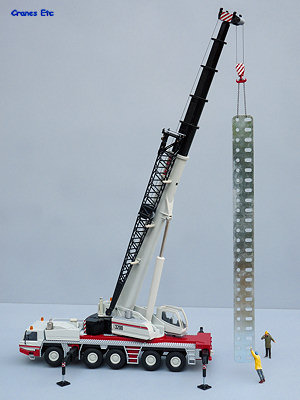 | | Lifting a piece of steelwork. | 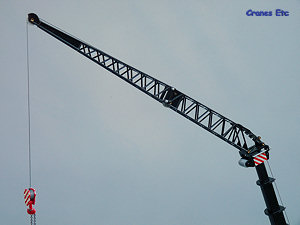 | | Details of the fly jib. The model really needs a single line hook block for the fly jib so without one the supplied hook has to do. |
|

